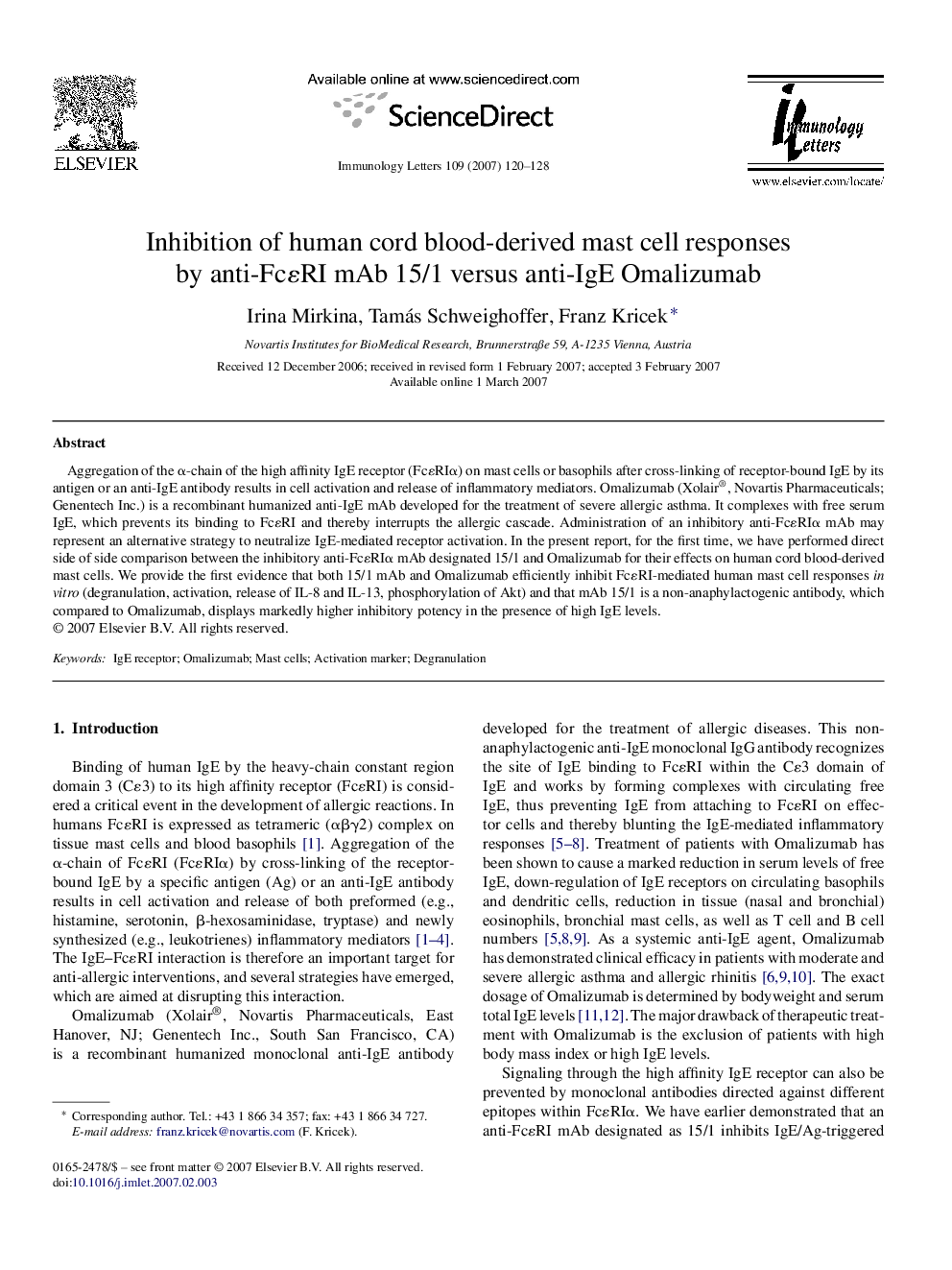| Article ID | Journal | Published Year | Pages | File Type |
|---|---|---|---|---|
| 3356361 | Immunology Letters | 2007 | 9 Pages |
Aggregation of the α-chain of the high affinity IgE receptor (FcɛRIα) on mast cells or basophils after cross-linking of receptor-bound IgE by its antigen or an anti-IgE antibody results in cell activation and release of inflammatory mediators. Omalizumab (Xolair®, Novartis Pharmaceuticals; Genentech Inc.) is a recombinant humanized anti-IgE mAb developed for the treatment of severe allergic asthma. It complexes with free serum IgE, which prevents its binding to FcɛRI and thereby interrupts the allergic cascade. Administration of an inhibitory anti-FcɛRIα mAb may represent an alternative strategy to neutralize IgE-mediated receptor activation. In the present report, for the first time, we have performed direct side of side comparison between the inhibitory anti-FcɛRIα mAb designated 15/1 and Omalizumab for their effects on human cord blood-derived mast cells. We provide the first evidence that both 15/1 mAb and Omalizumab efficiently inhibit FcɛRI-mediated human mast cell responses in vitro (degranulation, activation, release of IL-8 and IL-13, phosphorylation of Akt) and that mAb 15/1 is a non-anaphylactogenic antibody, which compared to Omalizumab, displays markedly higher inhibitory potency in the presence of high IgE levels.
